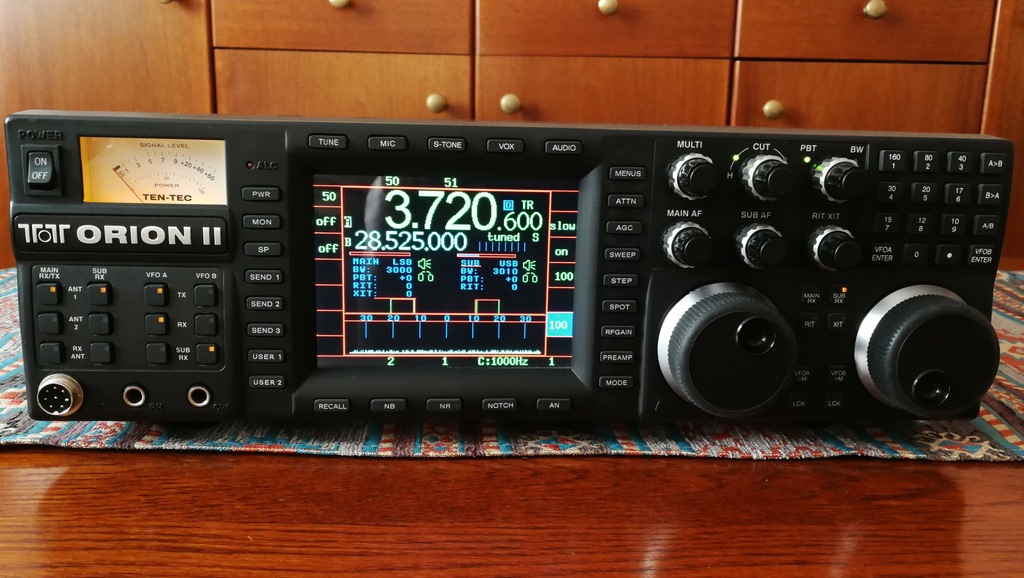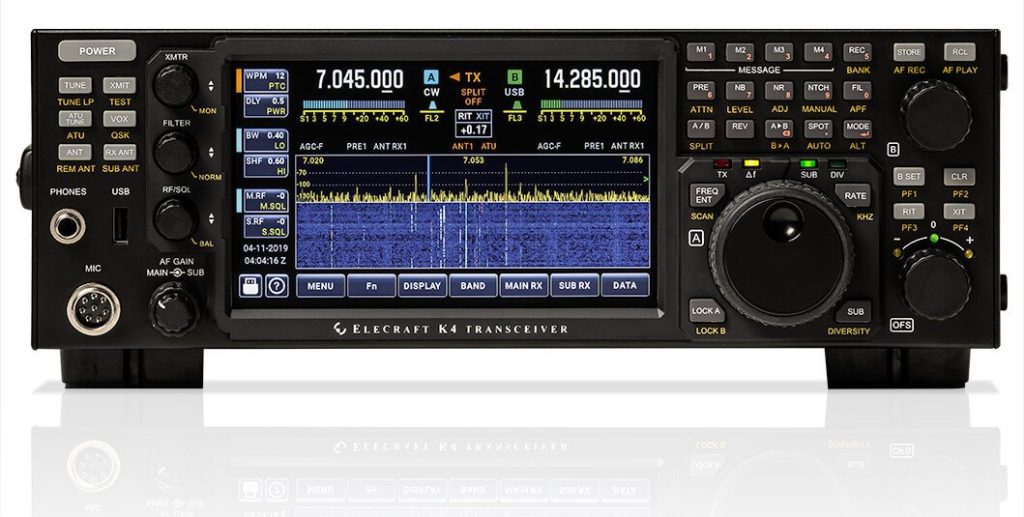Pour votre Information , Je ne Travail en Télégraphie qu'avec du Matériel Made USA , je vous les Présentent
HIGH-PERFORMANCE DIRECT-SAMPLING SDR
Our new K4 doesn’t just harness the latest technology: it blends new tech with a classic user interface to create a transceiver that’s more than the sum of its parts. One that’s sophisticated, yet civilized.
Like you, we’ve witnessed the recent revolution in direct sampling and SDRs. But rather than rush toward change, we’ve been observing — saving the best ideas, testing them, and quietly merging them into a new kind of radio. The resulting modular, hybrid design is innovative and versatile, yet still a pleasure to use.
In particular, operators who’ve used our K3S transceiver and P3 panadapter will find the K4’s controls familiar, and its complement of I/O compatible with their existing station. But they’ll also discover a new level of convenience in the bright, 7” touch display, which combines a large panadapter with three intuitive multi-function controls. Everything you need is at your fingertips, including a unique built-in help system.
Tentec Orion 566AT Materiel Made USA

TEN-TEC 566 Orion II HF Transceiver is no longer in production.
This is a support and documentation page.
• ORION II continues the high-performance legacy established by the original ORION transceiver. ORION II adds a brilliant color screen, a new roofing filter system (with a slight increase in receiver performance vs. ORION), new audio routing for line level outputs and an 8-pin microphone connector.
• Two 32-bit floating-point ADI SHARC DSP processors and a new 32-bit control processor using the latest generation Freescale DragonBall Super VZ chip. Provides faster front panel control response and accelerated remote operation via RS-232. This new processor also provides the horsepower for a future planned “HIGH SPEED SWEEP” accessory. Features, price, and availability of accessory to be determined.
• Full dual receive capability. An amateur-bands- only main receiver, (10 through 160 meters) utilizes selectable crystal roofing and IF-DSP bandwidth filtering. The sub receiver uses a single crystal roofing filter and IF-DSP bandwidth filtering and is general coverage to 30 MHz. Both receivers can be used simultaneously on any frequency, with no compromise in performance. The two receivers can share a single antenna or each can be fed from a separate antenna. Bandwidth, AGC, PBT, Hi-Lo Cut, AF and RF gain, attenuator, DSP noise reduction and notch are all selectable independently on each receiver.
Read More
Drake TR7

|
Présentation : |
|
La production industrielle de matériel d’émission-réception était technologiquement orientée fin des années soixante vers le « tout tube », souvenons-nous des séries Heathkit, Drake, Collins, Swan, Yaesu (plus connues sous la marque Sommerkamp en Europe), Trio (futur Kenwood) pour ne citer que les plus célèbres qui ont marqué une bonne génération d’amateurs. Les années soixante-dix ont vu l’introduction, par les mêmes marques, de matériels hybrides, tubes-transistors, fort logiquement le passage au « tout transistor » s’est imposé en fin de décennie. Le produits Drake étaient célèbres à cette époque pour leurs qualités radioélectriques, leur robustesse, et aussi leur prix exorbitants. La ligne de production reposait sur deux éléments phare, le transceiver TR4C (voire TR4CW en fin de production) et la fameuse ligne composée du R4C / T4XC. Drake pour répondre à la concurrence ainsi d’ailleurs que pour étendre sa gamme professionnelle présenta vers 1976 le TR7, appareil révolutionnaire tant pour le marché que pour la marque puisqu’il constituait un saut technologique important en intégrant des techniques nouvelles comme la synthèse de fréquence, la couverture générale, la conversion supérieure etc. Il faut se resituer dans le contexte de l’époque, passer d’un TR4C vers un TR7 équivaudrait aujourd’hui, pour un automobiliste, à la transition d’une 404 Peugeot vers une 407. La conception du TR7 a été dirigée par Mike Elliott qui avant de travailler pour Drake était chef-ingénieur chez Heathkit. Alors qu’avait-il ce fameux TR7 pour susciter tant d’envie et coûter si cher ? |
